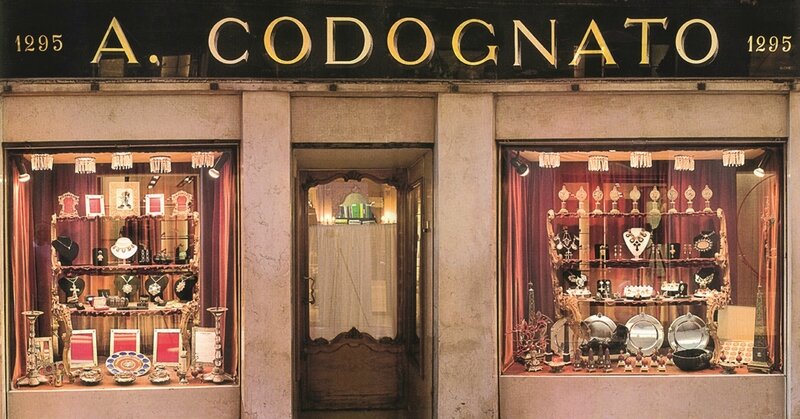 published 14/03/2011 at 06:58 PM by Jenna Sauers
published 14/03/2011 at 06:58 PM by Jenna Sauers
Ten days ago in Paris, just before the most recent Christian Dior fashion show, company C.E.O. Sidney
Toledano took the highly unusual step of getting up on the runway to make a speech. The circumstances that led Toledano to take this action were, too, abnormal: Dior's creative director of fifteen years, John Galliano, had been arrested days before for allegedly harassing two
strangers with an anti-Semitic and racist diatribe. Another, similar, criminal complaint had just been made by an alleged second victim, and there had also been the release of that now notorious
cell phone video of Galliano telling a third group of people, "I love Hitler. People like you would be dead. Your mothers, your forefathers, you'd all be fucking gassed."

Dior suspended Galliano after his arrest, and fired him almost as soon as the video, brokered by a paparazzi agency, hit the Internet. But before the fall Dior collection — the last Galliano work
that will sell under the Dior name — Toledano felt the need to explain himself. And to limit any damage to a brand that realized revenues of over $28 billion last year. Toledano's speech read, in
part:
So now, more than ever, we must publicly re-commit ourselves to the values of the House of Dior. Christian Dior founded his House in 1947. His family had been ruined in the
Crash of 1929 and his own beloved sister had been deported to Buchenwald. In the aftermath of the dark years of the war, he sought to free women, to give them back their sparkle and
joyfulness.
There are a number of inaccuracies in that paragraph. (The very least of which is that Christian Dior founded his fashion house in 1946.) The most remarkable piece of news — that Dior had a
sister who was deported by the Nazis — is so vague as to be suspicious. Who was this "beloved sister"? What was her name? For what alleged crimes was she arrested? Was she Jewish? Did she survive
the war? Why isn't this episode mentioned in any major Dior biographies or company histories? Also encouraging of skepticism is the fact that this Holocaust-victim sister, of whom we had heard
nothing before, appears in the Dior narrative just as the company image could most use a little burnishing on the racial-sensitivity front.
But as it turns out, what is perhaps most interesting where Christian Dior's youngest sister Catherine is
concerned is that her real story is, if anything, actually far more impressive than the version from Toledano's speech.
Dior's sister Catherine Dior was was not, in fact, sent to Buchenwald, which was (primarily) a men's camp. She went to Ravensbrück, where women were held. The journalist and historian Gitta Sereny's collection of writing about the Holocaust, The Healing Wound, describes Dior's crime: she had been a
member of "the section 'Massif Central' of Polish intelligence in France," a Resistance network focused on gathering and transmitting intelligence about German troop movements, production, and
weaponry.
This élite organization of more than 2,000 agents — which suffered enormous losses — was later credited as one of the most dynamic intelligence movements in Europe. By the
end of 1942, most of its leaders had been killed by the Gestapo.
One fashion biography that mentions Catherine's role in the Resistance is Marie France Pochna's Christian Dior:
The Man Who Made The World Look New. Pochna's tone during her sole discussion of Catherine Dior's activities makes resisting the Nazis sound kind of like a boarding-school prank that had the side
effect of putting some of Christian Dior's élite friends at risk:
"During one of her visits, in June 1944, Catherine used [her brother's] apartment for her underground work. Christian was away, but [composer] Henri Sauguet and [artist]
Jacques Dupont were staying there following a bombing alert for the Batignolles neighborhood where they lived...They landed in the midst of a bizarre situation — Catherine and her underground
contacts coming and going at all hours, and Dior's Martinician cook quite beside herself with irritation. It
did not dawn on Sauguet just how dangerous the whole episode had been until he learned that Catherine had subsequently been arrested by the Gestapo. 'It was a very close shave,' he was to write in his memoirs. 'How would we have explained to the Gestapo that we were just spending the night there, far from home, at Christian Dior's invitation?'"
How, indeed. Sereny's account of the network in which Catherine Dior worked is probably a much more accurate
reflection of the stakes involved. Sereny writes of one wartime chicory date with Catherine Dior's close friend and fellow resister, Liliane Dietlin:
She had come to the café on her bicycle — the bicycle on which she virtually lived during those years. She wore wool stockings, a straight dark skirt with one seam undone
to give her space for riding her bike, a short fur jacket that had seen better days, passed on to her by her mother, and a knitted cap that hid her dark hair. She was twenty-nine then, but looked
eighteen, and there wasn't a male eye that didn't follow her when she came through that terrace door and hugged me, rather tightly I thought.
(Thirty-five years later, recalling that occasion, she told me that day had been quite terrible: she had carried four messages, three to individuals in the morning and one
to a group meeting that afternoon; eight people had been arrested that day, two in the morning and the six others that afternoon, just as Lili had turned into the streets on her bicycle. All
would be executed, mostly hanged after being tortured. 'A bad day,' she remembered. Were there many like that? She shrugged. 'Ah oui.')
Pochna writes that Catherine Dior joined the Resistance shortly after her brother, who had been demobbed from the army following France's defeat, returned to Paris in late 1941. Catherine, who
was then 25 years old, carried out her work right up until June of 1944, when she was arrested by the Gestapo. She was
put on one of the last trains out of Paris, which departed on August 15, just days before the liberation of the city began. Toledano's mistake may stem from the fact that the men on that train
were sent to Buchenwald. Around 2,600 people were packed into the cattle cars of that
train. Eight-hundred and thirty-eight would survive.
It is not known if Christian Dior knew about his sister's activities, but between the time of her arrest and
the time of her deportation, he did try to seek her release, both via the Nazi contacts he made at his job — Dior was a designer at the couture house of Lucien Lelong, which necessarily counted
some prominent Nazi and collaborator clients — and with Raoul Nordling, the Swedish consul-general who was
known for trying to mediate on behalf of prisoners and the Red Cross during the Nazi occupation. On August 18, Nordling secured a promise from the Nazis that Catherine Dior would be placed under
the protection of Sweden if she was still on French soil. But the train had already entered Germany.
The writer Prosper Keating shared a detailed account of Catherine and Christian Dior's wartime associations and
activities at the Fashion Spot. Though forced to work under atrocious conditions at various German munitions factories, Catherine Dior survived the war and was liberated near Dresden in April,
1945. She returned to Paris that May. She was awarded the Croix de Guerre — "which was rare," notes Keating, "for a resistance member as it was usually reserved for regular armed forces" — as
well as the Combatant Volunteer Cross of the Resistance, the Combatant Cross and, in the U.K., the King's Medal for Courage in the Cause of Freedom. She was named a chevalière of the Legion of
Honour. Her brother Christian also had her in mind in 1947, when he named his first perfume Miss Dior. She died
in 2008.
Like many people who lived through the Second World War and the Nazi occupation of France, Christian
Dior had both relatives who were Nazi sympathizers (his niece Françoise, who became a full-fledged neo-Nazi later in life, counted hearing an occupying SS officer call her "What a beautiful little Aryan girl" as one of the "sweetest" memories of her childhood) and
relatives who actively resisted the occupation. Christian Dior's own choices — to work in an industry that was
on the one hand suppressed by the Nazis, who placed many restrictions on French fashion houses, and closed several, with a view to eventually dismantling the French fashion industry and making
Berlin a fashion center, but which on the other hand necessarily depended, at least in part, on wealthy occupiers and collaborators for its clientele — were obviously equally complicated. The
challenge today lies in seeking to accurately understand these choices, and the circumstances in which they were made.
Photo: Catherine Dior wearing her medals, left, and the Dior family in the early 1920s, right. Christian Dior is in the back row, far left, and Catherine Dior is seated in the front row
between their parents, Maurice and Madeleine. Photos via this site and this book.


















